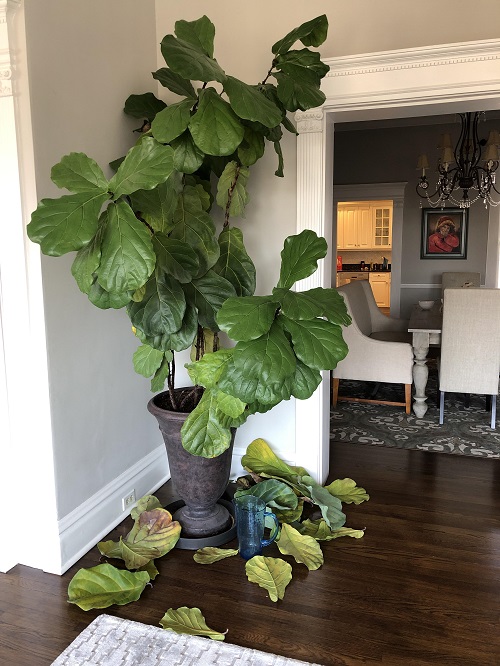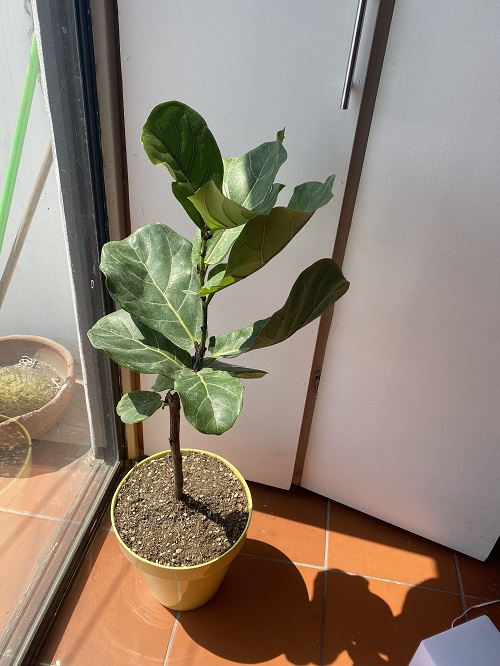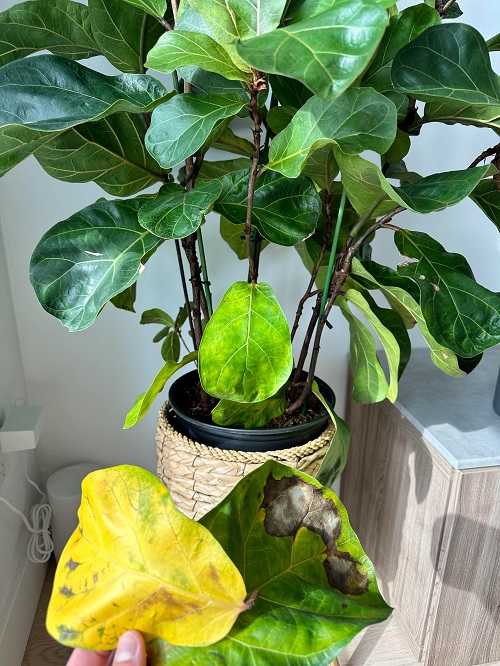Discover Why Your Fiddle Leaf Fig May Drop Leaves in the Fall and How to Fix It with this post and maintain the beauty of this houseplant.

Fiddle-leaf fig plants (Ficus lyrata) are loved for their large, green, glossy foliage, which makes them beautiful houseplants. However, caring for this plant can sometimes be tricky, mainly in fall and around the onset of winter when many gardeners notice their plant starts dropping leaves.
If you are also concerned, then read this informative post about Why Your Fiddle Leaf Fig May Drop Leaves in the Fall and How to Fix It.
Why Your Fiddle Leaf Fig May Drop Leaves in Fall
1. Due to Seasonal Change
During the fall, the days become shorter, and there is less sunlight, which makes the fiddle leaf fig stressed. This plant prefers bright, indirect light; the reduction in sunlight can cause the leaves to drop as they adapt to the change in their surroundings.
2. Temperature Fluctuations
Fiddle-leaf figs enjoy warm, stable temperatures. When the weather cools in the autumn, drafts from doors or windows or placing the plant too close to heating vents can stress it, which may lead to foliage turning brown or falling off.
3. Low Humidity
In the fall and winter, indoor humidity levels drop due to heating systems. Fiddle leaf figs prefer moderate to high humidity, and dry air can cause the plants to lose moisture through their foliage, which leads to leaf drop.
4. Stress of Moving
Another reason behind leaves dropping is moving the potted plant to different locations to avoid cold drafts or provide more light.
5. Overwatering or Underwatering
The growth of plants naturally slows down in the fall, and people mistake them for overwatering. Fiddle leaf figs don’t require as much water as they do during spring or summer. On the other hand, underwatering due to a change in routine can also cause the leaves to dry out and fall.
How to Fix Leaf Drop in Your Fiddle Leaf Fig
Adjust Lighting

When the days get shorter, make sure your fiddle leaf fig is still getting enough light. Move it closer to a bright window, but avoid direct sunlight, which can burn its leaves. If natural light is limited, consider using a grow light to give your plant the boost it needs.
Regulate Temperature
Keep your fiddle leaf fig in a spot where the temperature stays consistent, ideally between 65°F and 75°F (18°C to 24°C). Avoid placing it near drafts, heating vents, or windows that get too cold at night. A stable environment will help prevent leaf drop.
Reduce Watering
Watering is a common issue with fiddle leaf figs. Reduce how often you water in the fall since the plant is not growing as fast. Wait until the top 1-2 inches of soil are dry before watering. When you do water, make sure it drains well and that the pot doesn’t sit in standing water, which can cause root rot.
Increase Humidity

If the air in your home is dry, especially in fall and winter, increase the humidity around your plant. You can do this by misting the leaves, placing a tray of water near the plant, or using a humidifier. A 40-60% humidity level is ideal for fiddle leaf figs.
Minimize Movement
If you must move your fiddle leaf fig, try to do it gradually to avoid shocking the plant. Once you’ve found a good spot with enough light and a stable temperature, try to leave it there to prevent further stress.
Prune Damaged Leaves

If some leaves turn brown or have fallen off, you can carefully prune away any damaged or dying leaves. This will help the plant conserve energy and focus on maintaining its healthy leaves.
Be Patient
Fiddle leaf figs can be slow to recover after leaf drop, so don’t panic if it takes some time for your plant to bounce back. As long as you adjust its environment and care routine, it should stabilize and begin to grow new leaves again when conditions improve.



